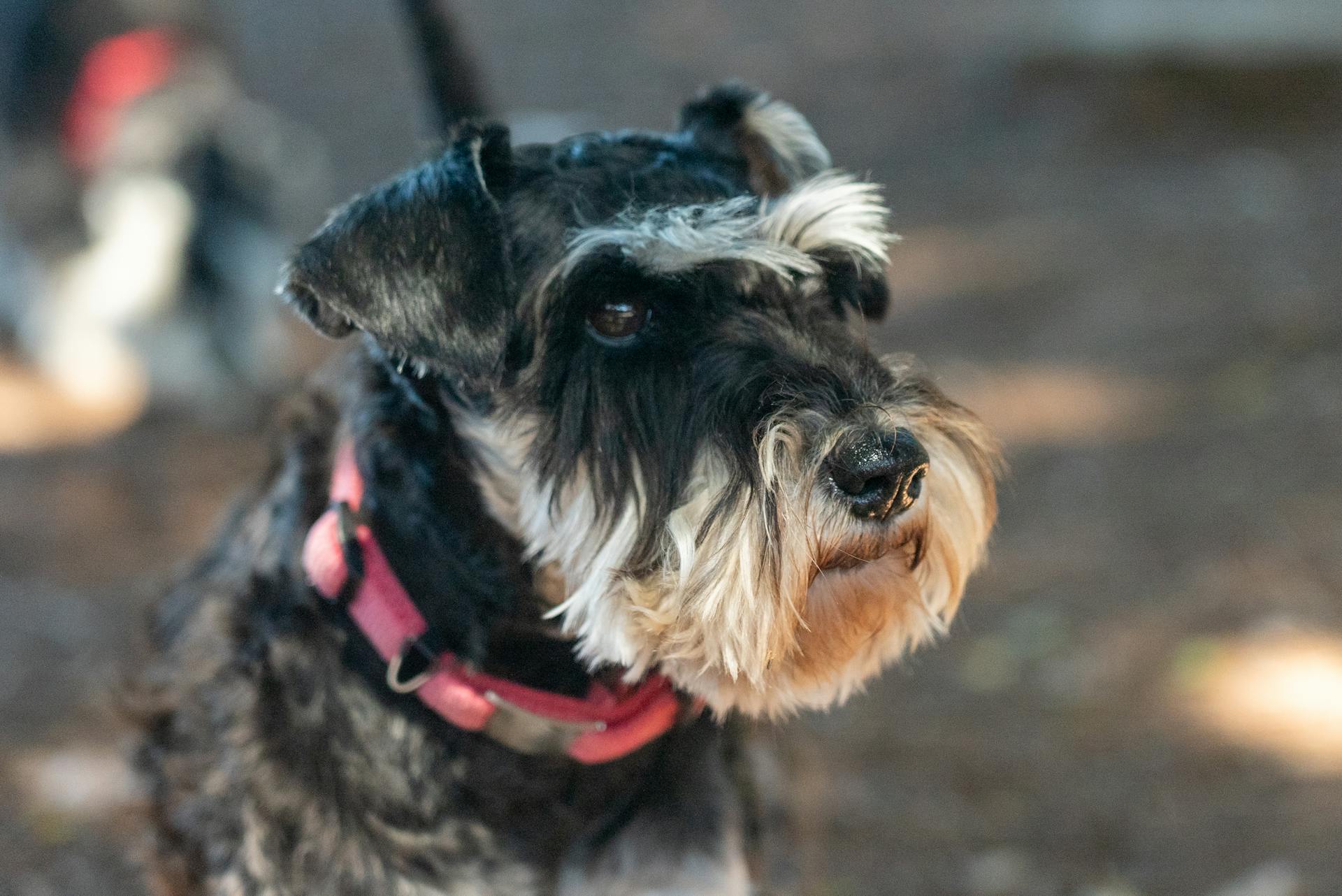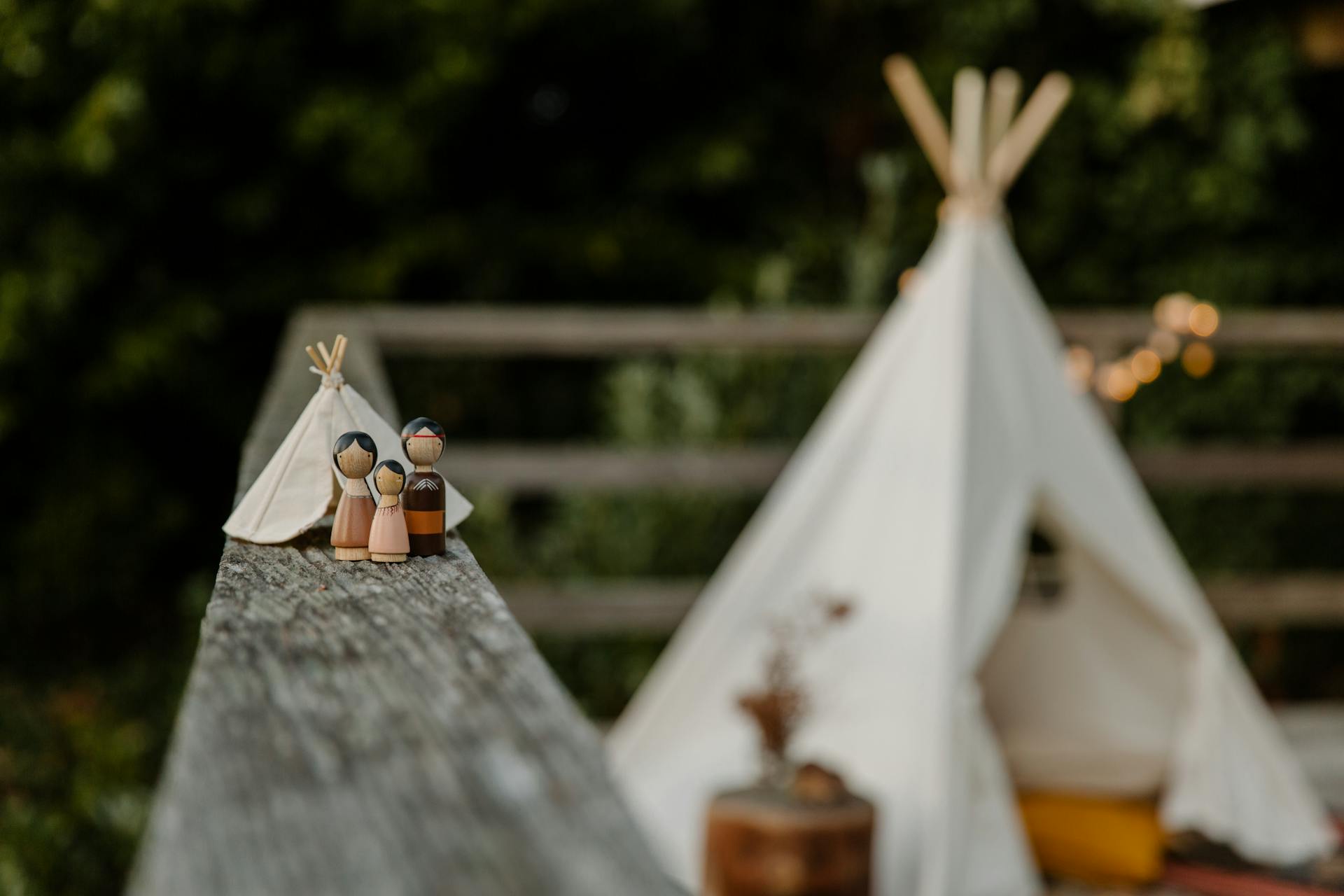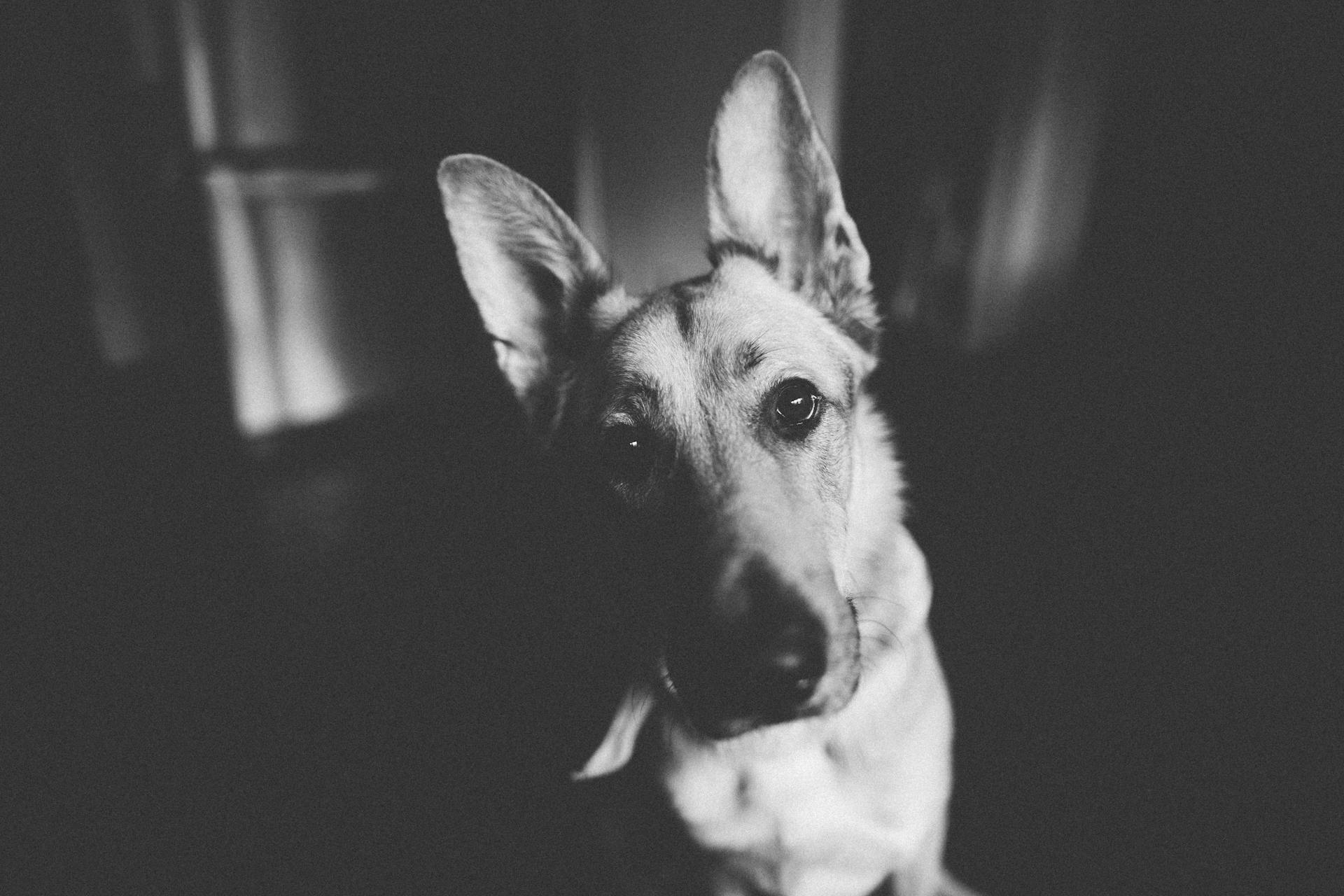
The Miniature Schnauzer and Standard Schnauzer are two distinct breeds that often get lumped together due to their similarities. They both originated in Germany as farm dogs and have a similar bearded face, but that's where the similarities end.
The Miniature Schnauzer typically weighs between 11-18 pounds and stands 10-14 inches tall at the shoulder. They are known for their intelligence, loyalty, and playful personalities.
One of the main differences between the two breeds is their size, with the Miniature Schnauzer being significantly smaller than the Standard Schnauzer. The Standard Schnauzer weighs between 30-45 pounds and stands 18-22 inches tall.
Their grooming needs are also distinct, with the Miniature Schnauzer requiring regular brushing to prevent matting and tangling of their fur.
Breed Standards
The miniature schnauzer and standard schnauzer have distinct breed standards that set them apart.
Miniature schnauzers typically stand between 10 and 14 inches tall at the shoulder.
Their standard coat is double-layered, with a soft undercoat and a harsh outer coat that requires regular grooming.
Standard schnauzers, on the other hand, stand between 18 and 22 inches tall and have a similar double-layered coat.
Their size and coat requirements mean that both breeds need regular exercise and grooming to stay healthy and happy.
Curious to learn more? Check out: Grooming Lagotto Romagnolo
FCI Breed Standard
The FCI Breed Standard is a comprehensive guide that outlines the ideal characteristics of a breed, including its physical appearance, temperament, and behavior. It's developed by the Fédération Cynologique Internationale (FCI), which is the world's largest organization dedicated to the improvement of breeds.
The FCI Breed Standard for a breed is typically around 2-3 pages long and includes detailed descriptions of the breed's physical characteristics, such as its size, coat, and head shape. For example, the Standard for the German Shepherd breed describes its height as being between 24 and 26 inches.
Each breed has its unique Standard, which is meant to serve as a benchmark for breeders and owners to strive for. The Standard is not a set of rules, but rather a guide that helps to preserve the breed's characteristics and integrity.
Curious to learn more? Check out: Schnauzer Personality Traits
Schnauzer Overview
Schnauzers are a wonderful breed, known for their intelligence, loyalty, and protective nature. They come in three sizes: Miniature, Standard, and Giant, each with its unique characteristics.
Miniature Schnauzers are perfect for families with plenty of free time, as they require regular exercise and play. They're also great for families with children, as they're patient and loving.
Standard Schnauzers, on the other hand, are more reserved around strangers and can be stubborn at times. However, they make excellent watchdogs and are devoted to their families.
Both Miniature and Standard Schnauzers require regular grooming to keep their signature beards looking their best. They also need daily exercise, such as walks and playtime, to keep them happy and healthy.
Here's a comparison of the two breeds:
Standard Schnauzers are generally not recommended for inexperienced dog owners, as they can be challenging to train. However, with patience and positive reinforcement, they can learn to obey commands and behave well.
Overall, Schnauzers make wonderful companions for active families who are willing to provide the necessary care and attention.
Physical Characteristics
The Miniature Schnauzer has a very square-shaped build, measuring 11 to 14 inches tall and weighing 10 to 15 pounds for females and 11 to 18 pounds for males.
They have a double coat, with wiry exterior fur and a soft undercoat. The coat is trimmed by stripping, and blends into the furnishings. Recognized coat colors are black, pepper and salt, black and silver, and pure white; pepper and salt coloration is where coat hairs have banded shades of black, gray and silver.
Their rectangular head features V-shaped eyebrows extending over the eyes, and thick whiskers. Ears are set high on the skull and may be natural or cropped, with natural ears being small and V-shaped.
You might like: Thai Ridgeback Colors
General Appearance
The Miniature Schnauzer has a strong, rectangular head featuring V-shaped eyebrows extending over the eyes, and thick whiskers.
Their rectangular head is a defining characteristic of the breed.
The nose is always black and of good size.
A properly proportioned Miniature Schnauzer is nearly square, with the length of the front leg being approximately half of the dog's height.
The topline slopes very slightly from the withers to the tail, and the line of the back is strong and firm.
The loin is short, muscular, and deep with no tuck-up.
The Miniature Schnauzer's ears are set high on the skull and may be natural or cropped.
Natural ears are small, V-shaped, breaking above the skull and held close to the cheeks.
You might enjoy: Dogo Argentino Natural Ears
Height
A Miniature Schnauzer's height is quite impressive, ranging from 12 to 14 inches.
This range is considered acceptable for a mature Miniature Schnauzer.
Grooming
Miniature Schnauzers have a specific groom cut that's standard among the breed. This cut requires regular grooming, either by stripping or clipping, which can be a laborious process.
Stripping removes loose, dead coat, and can be done by hand or with a stripping knife. Clipping, on the other hand, produces a soft, silky, skin-close trim.
Miniature Schnauzers are often groomed differently than show dogs, with pets typically clipped and show dogs stripped. Regular grooming is recommended every six weeks.
The coat is close at the body and falls into a fringe-like foundation on the undercarriage, called furnishings. These furnishings can be left to grow, but must be combed regularly.
All Schnauzers sport a beard, created by allowing the hair around their noses to grow out. The body hair will grow two to four inches if left unclipped or unstripped, and will often tangle into mats and curls.
Here are some key grooming facts to keep in mind:
- Grooming is recommended every six weeks.
- Clipping produces a soft, silky, skin-close trim.
- Furnishings must be combed regularly.
- The beard should be washed regularly to prevent bad smells.
Temperament and Health
The Miniature Schnauzer temperament is nearly ideal for a companion dog: affectionate but spirited, intelligent, obedient, and friendly. They get along well with other dogs as well as people.
Miniature Schnauzers are usually easy to train, tending to be excellent watchdogs with a good territorial instinct, but more inclined toward barking than biting. They are often aloof with strangers until the owners of the home welcome the guest, upon which they are typically very friendly to them.
Stanley Coren ranked the Miniature Schnauzer 12th out of 140 breeds in his book The Intelligence of Dogs (2006), grouping the breed amongst "excellent working dogs". Experts contacted by Coren ranked the Miniature as fifth among top 15 breeds at watchdog barking ability.
Miniature Schnauzers are relatively hardy dogs, but they are predisposed to certain hereditary conditions, including bladder stones, myotonia, and liver shunts. They are also prone to cataracts, hypercholesterolemia, epilepsy, skin allergies, and obesity.
Here are some common health issues that can affect Miniature Schnauzers:
- Bladder stones
- Myotonia
- Liver shunts
- Cataracts
- Hypercholesterolemia
- Epilepsy
- Skin allergies
- Obesity
Teeth
The Miniature Schnauzer has a complete set of large, evenly spaced, white teeth meeting in a scissors bite.
A level bite is considered a fault in this breed. Overshot or undershot teeth are also disqualifications, as is a wry mouth.
For more insights, see: What Is a Cane Corsos Bite Force
Temperament
The Miniature Schnauzer temperament is quite unique and can be a great asset to the right owner. They are naturally alert and spirited, yet obedient to command.
They are excellent watchdogs with a good territorial instinct, but tend to bark more than bite. This means they'll sound the alarm when they sense something unusual, but won't likely attack.
Miniature Schnauzers are often aloof with strangers until their owners welcome them, but then they're typically very friendly. This can make them great companions for active and even older adults.
They're highly intelligent and trainable, ranking 12th out of 140 breeds in Stanley Coren's book The Intelligence of Dogs. This means they can excel in dog agility trials, obedience, showmanship, flyball, and tracking.
However, they do have a high prey drive, which means they may chase small animals if not kept on a leash in a fenced area. This is something to keep in mind if you have other pets in the house.
Despite their independent streak, they generally get along well with housemates and are good with children. But they may not be trustworthy with smaller pets unless raised with them.
One thing to be aware of is that they can be wary of strangers and unwelcoming to strange dogs, so socialization is key. They may also bark a lot, especially when alerting their owners to potential threats.
Overall, the Miniature Schnauzer temperament is nearly ideal for a companion dog: affectionate, yet spirited; intelligent, obedient, and friendly.
Related reading: How to Train a Miniature Schnauzer Not to Bark
Health
Miniature Schnauzers are generally hardy dogs, but they can be prone to certain health issues. A UK study found a life expectancy of 13.3 years for the breed, which is higher than the average for crossbreeds.

Atopic dermatitis is a common issue in Miniature Schnauzers. They are also prone to Schnauzer comedo syndrome, a condition that causes small comedones to develop on their dorsal spine.
Miniature Schnauzers have a significant predisposition to gall bladder mucoceles, with a 5.23 odds ratio. This means that they are more likely to develop this condition than other breeds.
The breed is also prone to congenital portosystemic shunts, with 1% of Miniature Schnauzers having the condition compared to 0.05% for mixed-breed dogs. This is a serious condition that can affect a dog's liver function.
Miniature Schnauzers are also at risk for von Willebrand disease (vWD), a bleeding disorder that occurs due to a deficiency of von Willebrand factor. This condition is inherited and can be life-threatening if left untreated.
Here are some common health issues that can affect Miniature Schnauzers:
- Bladder stones
- Myotonia
- Liver shunts
- Cataracts
- Hypercholesterolemia
- Epilepsy
- Skin allergies
- Obesity
Exercise and Training
Miniature Schnauzers are bright dogs and eager to please their humans, making them relatively easy to train.
Following canine obedience courses is highly recommended, especially for first-time dog owners.
Enrolling your Miniature Schnauzer in agility competitions can make the learning period more stimulating.
They can be stubborn at times, so consistency and patience are key when training your Miniature Schnauzer.
By incorporating agility classes into their training, you can help keep your Miniature Schnauzer engaged and active.
Related reading: Pembroke Welsh Corgi Agility
Choosing a Schnauzer
Choosing a Schnauzer can be a thrilling experience, but it's essential to consider their energetic nature. Both Miniature and Standard Schnauzers are full of energy and love children.
They thrive on family life, which makes them perfect for households with kids. However, they can be stubborn and often reserved around strangers, so socialization is crucial.
Miniature Schnauzers are a great fit for those who have plenty of free time, while Standard Schnauzers are more protective of the family. But, they can be a challenge to train, so consistent training is a must.
If you're not willing to deal with frequent barking, you might want to consider another breed. But, if you're up for the challenge, a Schnauzer can be a loyal and loving companion.
Here are some key differences between Miniature and Standard Schnauzers:
Frequently Asked Questions
What is the difference between a miniature schnauzer and a Standard Schnauzer?
Miniature Schnauzers bark more frequently than Standards, but Standards can be more stubborn and require more laborious training
How big do Standard Schnauzers get?
Standard Schnauzers typically grow to 18-19 inches in height and weigh between 25-45 pounds.
Does a Standard Schnauzer bark a lot?
Standard Schnauzers are generally quiet dogs that don't bark excessively, but they will alert their owners to potential threats. They're known for their keen sense of alertness and ability to sound the alarm when needed.
Featured Images: pexels.com


